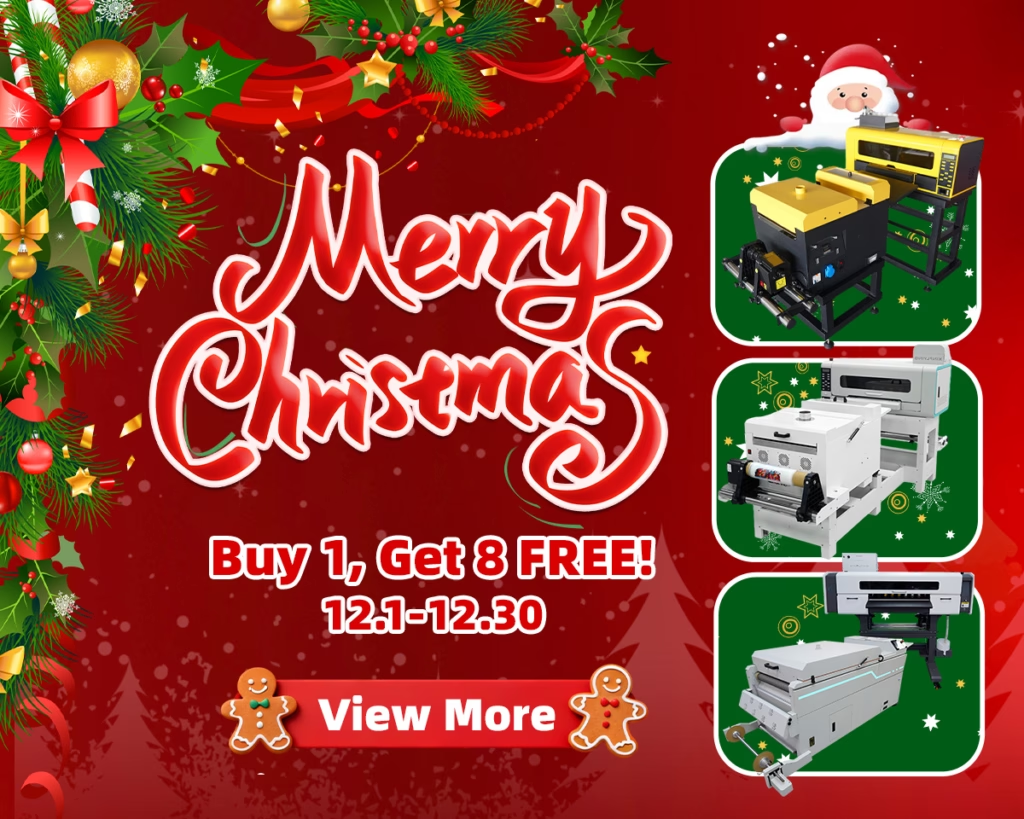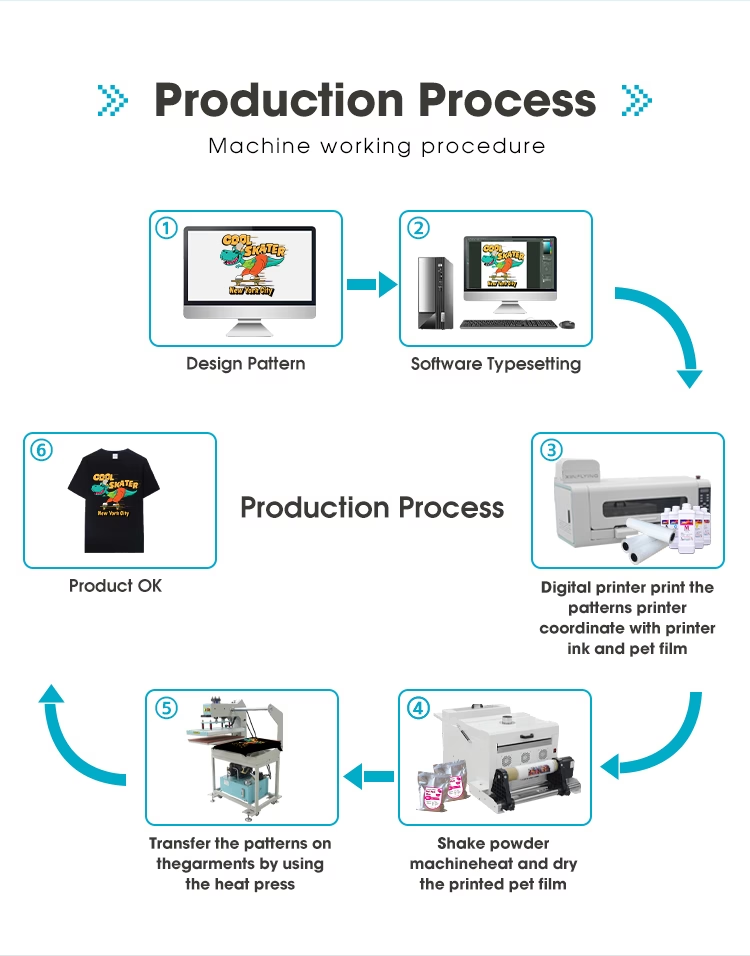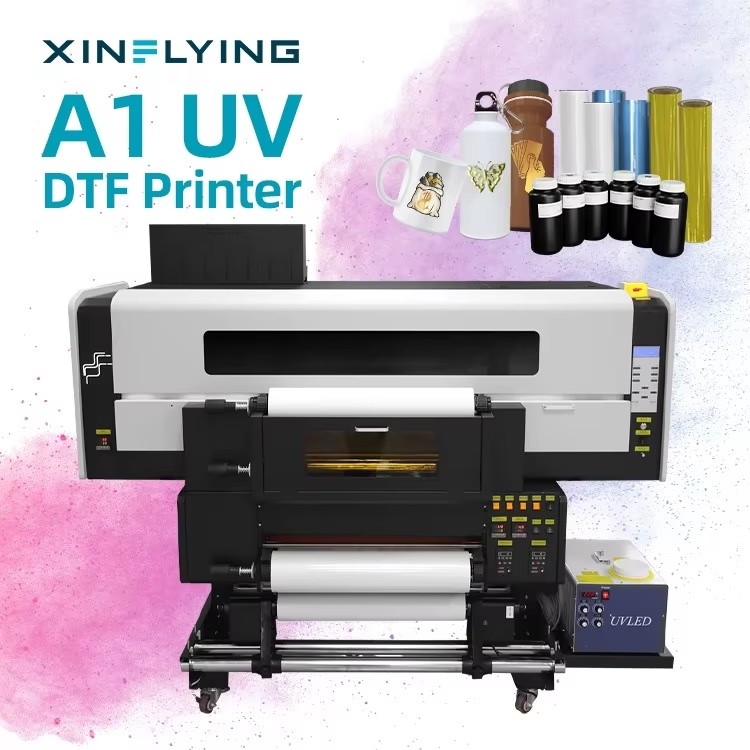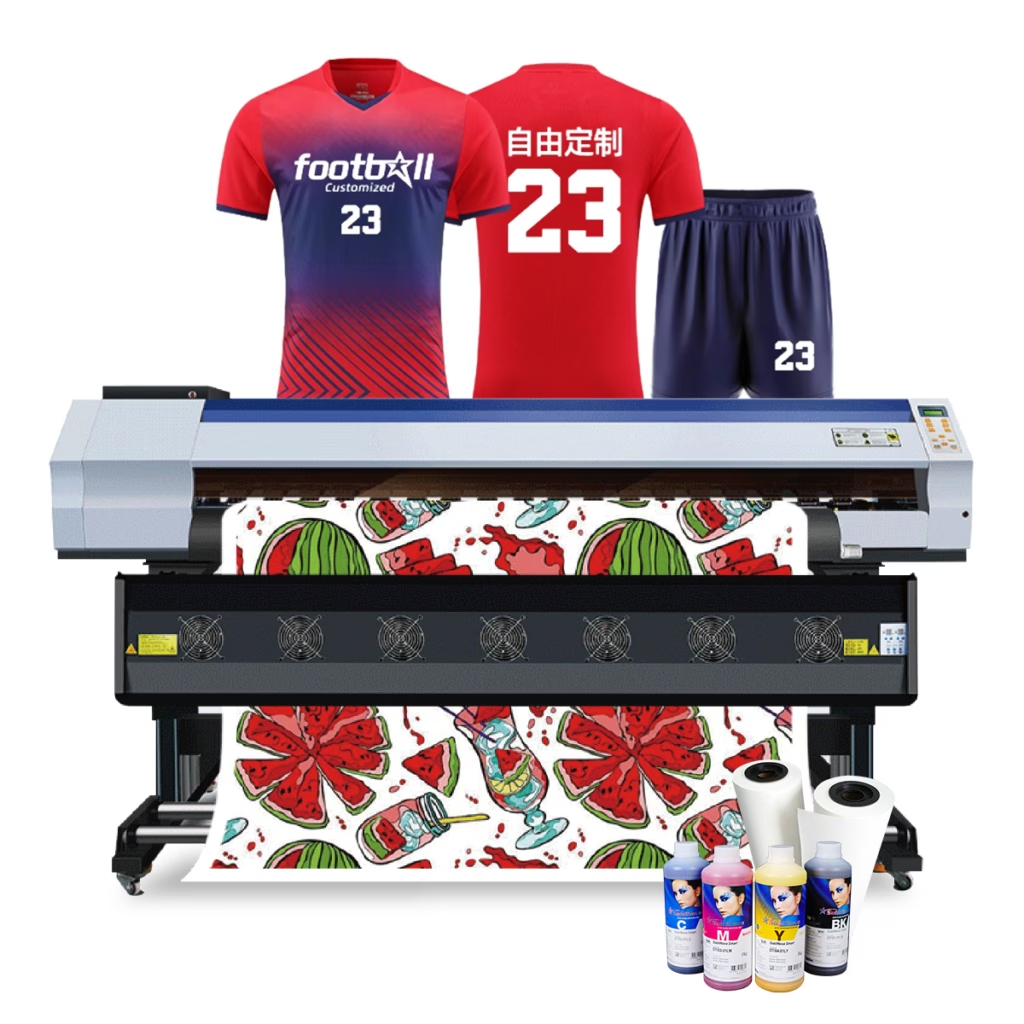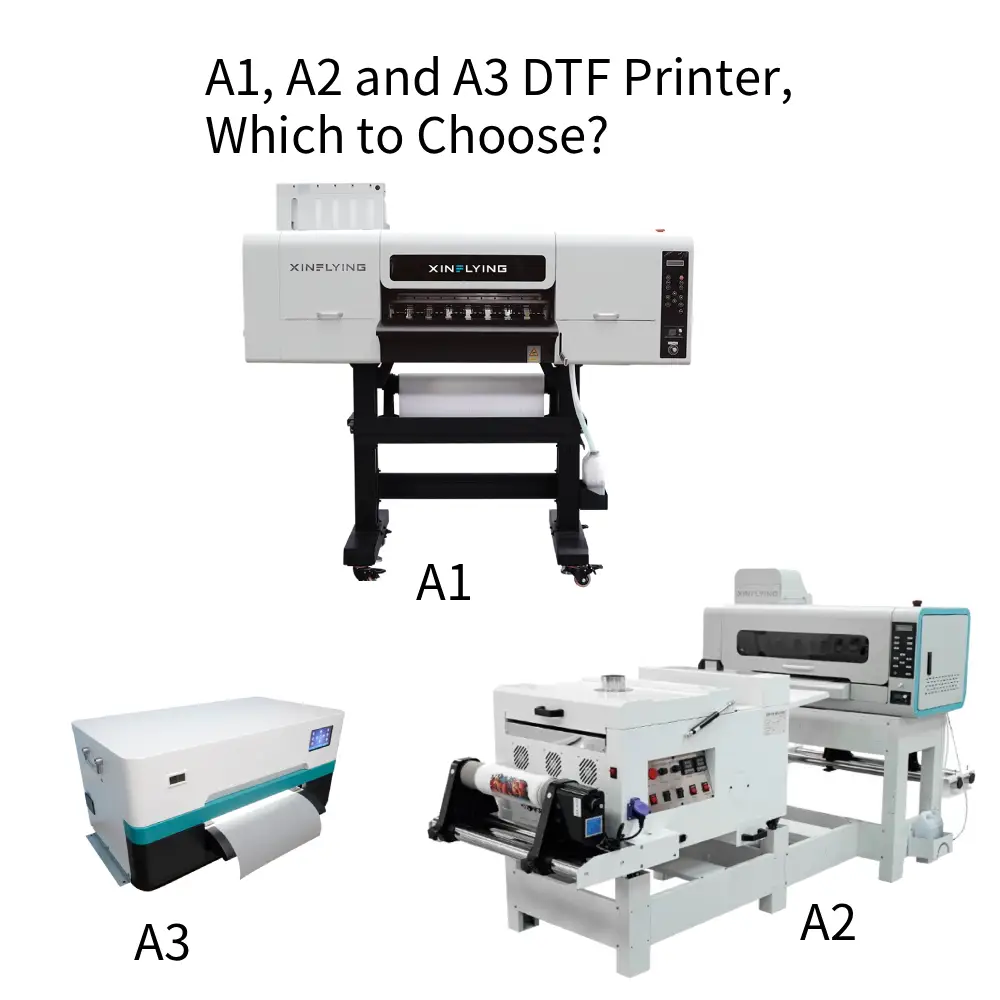원단에 디자인을 프린팅할 때, 시중에는 다양한 방법이 있지만. 널리 사용되는 두 가지 기술은 Direct-to-Fabric입니다. (DTF) 인쇄 및 승화 인쇄. 이 블로그에서는, 우리는 그들의 기본 원리를 탐구할 것입니다, 주요 차이점, 응용 프로그램, 장점과 단점, 궁극적으로 특정 요구 사항에 가장 적합한 방법을 결정합니다..
DTF 인쇄 기본

DTF 인쇄는 무엇입니까??
DTF 인쇄, 라고도 직접 직물 인쇄, 다양한 종류의 직물에 디자인을 전사하는 데 사용되는 최첨단 기술입니다.. 이 방법은 특수 필름에 디자인을 인쇄하는 것과 관련이 있습니다., 그런 다음 열과 압력을 사용하여 직물로 전달됩니다.. 이 과정을 통해 고품질의, 다양한 직물에 생동감 넘치는 프린트, 섬유 산업에서 인기 있는 선택이 되었습니다.. 기존 방식과는 다르게, DTF 인쇄는 의류에서 눈에 띄는 복잡한 패턴과 생생한 이미지를 생성할 수 있는 유연성을 제공합니다..
DTF 인쇄는 어떻게 작동합니까??
DTF 프린팅 작업의 과정은 컴퓨터에서 원하는 디자인을 만드는 것부터 시작됩니다.. 디자인이 준비되면, 특수 필름에 인쇄하여 인쇄한 것입니다. DTF 잉크. 그런 다음 인쇄된 필름을 직물 위에 놓습니다., 둘 다 열 프레스 기계를 사용하여 열과 압력을 가합니다..
이 단계에서, 필름의 잉크는 액체상을 거치지 않고 고체에서 기체로 상변화를 겪습니다.. 이를 통해 잉크 입자가 직물 섬유에 직접 묻힐 수 있습니다., 오래 지속되고 생생한 인쇄물이 발생합니다.
승화 인쇄 기본
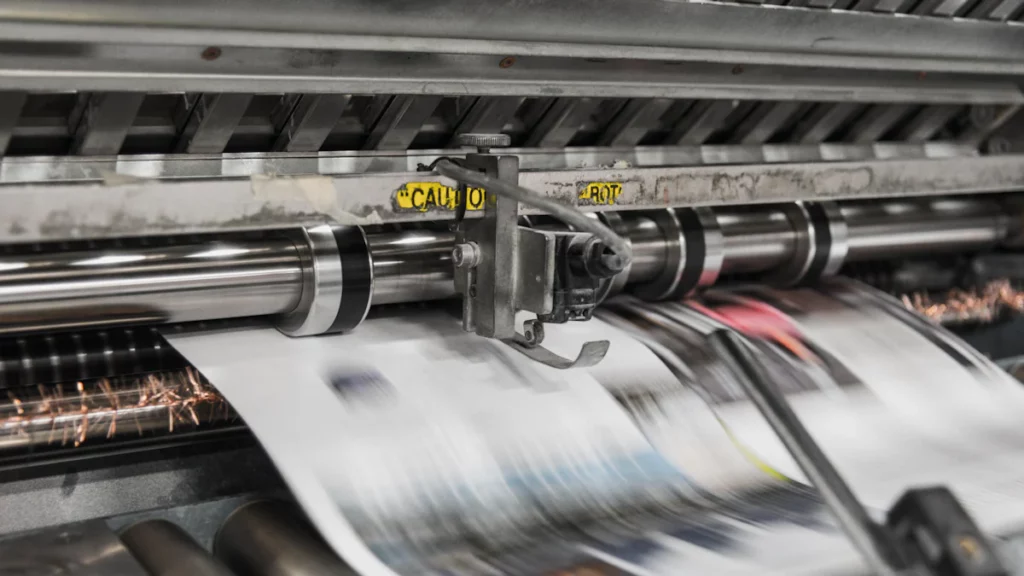
승화 인쇄란??
승화 인쇄 열과 압력을 이용하여 원단에 디자인을 전사하는 최첨단 방식입니다.. 이 과정에는 액체상을 통과하지 않고 고체 잉크 입자가 기체 상태로 변환되는 과정이 포함됩니다.. 그런 다음 가스가 직물에 침투하여 응고됩니다., 그 결과 생생하고 내구성 있는 인쇄물을 얻을 수 있습니다.. 기존의 인쇄방식과는 다르게, 승화 인쇄는 여러 번 세탁한 후에도 생생한 상태를 유지하는 복잡한 패턴과 이미지를 만들 수 있는 유연성을 제공합니다..
승화 인쇄는 어떻게 작동합니까??
이 과정은 컴퓨터에서 원하는 디자인을 만드는 것부터 시작됩니다.. 디자인이 확정되면, 특수 용지에 인쇄되어 있습니다. 승화 종이 사용하여 승화 잉크. 그런 다음 인쇄된 종이를 직물 위에 놓습니다., 둘 다 열 프레스 기계를 사용하여 열과 압력을 가합니다..
이 단계에서, 잉크가 승화됩니다., 고체 상태에서 직접 기체 상태로 변하는 것. 높은 온도로 인해 잉크 입자가 열리고 직물 섬유와 합쳐집니다., 그 결과 직물 자체에 인쇄물이 내장됩니다..
DTF와 승화 인쇄의 주요 차이점
지금, DTF와 승화 인쇄의 주요 차이점을 살펴보겠습니다., 지원 과정에 집중, 패브릭 호환성, 그리고 색상의 선명도.
신청 절차
DTF 인쇄에는 필름으로 전사한 다음 열과 압력을 가해 직물에 적용하는 작업이 포함됩니다.. 전송의 안정성이 향상되고 장기간 보관할 수 있는 기능을 제공합니다..
승화 인쇄는 고체 잉크 입자를 액상 없이 기체 상태로 옮깁니다.. 그 결과 일관된 색상의 꽃과 생생한 인쇄물이 탄생합니다..
패브릭 호환성
DTF 인쇄는 다목적이며 다양한 직물에 적용할 수 있습니다., 다양한 프로젝트에 적합하게 만들기.
승화 인쇄는 폴리에스테르 및 폴리머 코팅 인쇄물에 가장 잘 작동합니다., 스포츠웨어와 개인화 아이템에 이상적입니다..
색상의 선명도
DTF 인쇄는 모든 원단 색상에 생생한 결과를 제공합니다., 승화는 밝은 색상의 직물에 가장 잘 작동하고 흰색을 효과적으로 인쇄하지 않습니다..
내구성
DTF 프린트는 내구성이 뛰어나고 마모를 견딜 수 있습니다., 시간이 지나도 색이 바래지 않고 선명도를 유지하는 전사 방식.
승화 인쇄물은 내구성이 뛰어납니다., 특히 폴리에스터의 경우, 잉크 입자의 기체에서 고체로의 변환으로 인해 디자인이 직물에 통합되도록 보장.
DTF 인쇄의 장단점
이제 우리는 기본 원리를 살펴보았습니다. DTF 그리고 승화 인쇄, 구체적인 장점과 단점을 알아보겠습니다. DTF 인쇄. 이러한 주요 측면을 이해하면 다양한 응용 분야에 대한 이 방법의 적합성에 대한 귀중한 통찰력을 얻을 수 있습니다..
DTF 인쇄의 장점
1. 생생한 색상
눈에 띄는 장점 중 하나는 DTF 인쇄 직물에 생동감 있고 눈길을 끄는 색상을 만들어내는 능력입니다.. 이 프로세스를 통해 탁월한 색상 채도가 가능합니다., 그 결과 생동감 넘치는 디자인이 탄생했습니다.. 이 기능은 DTF 인쇄 색상의 선명도가 중요한 응용 분야에 이상적인 선택입니다., 패션 의류 같은, 스포츠 유니폼, 그리고 판촉물.
2. 복잡한 설계에 이상적
또 다른 중요한 이점 DTF 인쇄 복잡하고 세밀한 디자인을 정밀하게 렌더링하는 능력입니다.. 복잡한 패턴인지, 가는 선, 아니면 정교한 그래픽, DTF 인쇄란 무엇입니까? 복잡한 디자인의 미묘한 차이를 포착하는 데 탁월합니다.. 따라서 고해상도 인쇄가 필요한 시각적으로 눈에 띄는 의류 및 액세서리를 만드는 데 선호되는 선택입니다..
DTF 인쇄의 단점
1. 모든 직물에 적합하지 않음
DTF 인쇄는 직물 호환성 측면에서 다양성을 제공합니다., 모든 유형의 직물에는 적합하지 않을 수 있습니다.. 특정 특수 재료나 혼합물은 이 방법을 사용할 때 문제가 될 수 있습니다., 장식가는 DTF 인쇄를 진행하기 전에 직물 특성을 신중하게 평가해야 합니다.. 원단 구성 등의 요소를 고려하는 것이 필수적입니다., 조직, 최적의 결과를 보장하기 위해 직조합니다..
2. 다른 방법에 비해 긴 과정
DTF 프린팅 활용 시 또 다른 고려 사항은 전체 프로세스에 소요되는 시간입니다.. 디자인과 필름 준비부터 원단에 전사까지, 이 방법은 일반적으로 일부 대체 기술에 비해 처리 시간이 더 깁니다.. 결과는 종종 시간에 투자할 가치가 있지만, 데코레이터는 프로젝트에 대한 DTF 인쇄를 선택할 때 생산 일정을 고려해야 합니다..
승화 인쇄의 장점과 단점
지금, 승화 인쇄의 구체적인 장점과 단점을 살펴보겠습니다.. 이러한 주요 측면을 이해하면 다양한 응용 분야에 대한 이 방법의 적합성에 대한 귀중한 통찰력을 얻을 수 있습니다..
승화 인쇄의 장점
1. 내구성이 뛰어난 인쇄물
승화 인쇄로 탁월한 내구성 제공, 오래 지속되는 디자인이 필요한 애플리케이션에 선호되는 선택입니다.. 이 과정에는 고체 잉크 입자를 가스 상태로 변환하는 과정이 포함됩니다., 직물에 스며들어 굳어질 수 있도록 해줍니다.. 그 결과 직물 자체에 인쇄물이 내장됩니다., 퇴색 및 마모에 대한 저항력 강화. 승화인쇄란? 시간이 지나도 디자인의 생동감과 선명도가 유지되도록 보장합니다., 여러 번 세탁하고 장기간 사용한 후에도.
2. 광범위한 직물에 적합합니다
승화 프린팅의 가장 큰 장점 중 하나는 다양한 직물과의 호환성입니다., 폴리에스테르 및 폴리머 코팅 기판 포함. 이러한 다재다능함은 스포츠웨어와 같은 다양한 응용 분야에 이상적입니다., 판촉물, 맞춤 선물, 그리고 더. 다양한 직물 유형에 생생한 인쇄물을 생산할 수 있는 능력은 다양한 산업 전반에 걸쳐 승화 인쇄의 잠재적인 용도를 확장합니다..
승화 인쇄의 단점
1. 제한된 색상 옵션
승화 인쇄의 한 가지 한계는 다른 인쇄 방법에 비해 상대적으로 제한된 색상 옵션입니다.. 호환 가능한 직물에 생생한 색상을 생성하는 데 탁월하지만, 특정 음영이나 색조를 얻으려고 할 때 제약이 있을 수 있습니다.. 장식가는 색상 요구 사항을 신중하게 평가하고 디자인에 더 넓은 색상 스펙트럼을 원하는 경우 대체 방법을 고려해야 합니다..
2. 어두운 직물에는 적합하지 않음
승화 인쇄를 활용할 때 고려해야 할 또 다른 사항은 직물 색상과의 호환성입니다.. 이 방법은 최적의 색상 선명도를 위해 흰색 베이스 레이어에 의존하기 때문에 어두운 색상의 직물에는 적합하지 않습니다.. 밝은 색상의 원단에 선명한 프린트를 연출하는 데 탁월하지만, 데코레이터는 더 어두운 패브릭 색조로 작업할 때 대체 기술을 모색해야 할 수도 있습니다..
승화와 DTF, 선택할 수 있습니다?
승화와 DTF 중 하나를 선택할 때 (직접 영화) 인쇄 방법, 특정 요구 사항과 각 방법의 특성을 고려하는 것이 중요합니다.. 승화와 DTF 인쇄 중에서 선택할 때 고려해야 할 몇 가지 요소는 다음과 같습니다.:
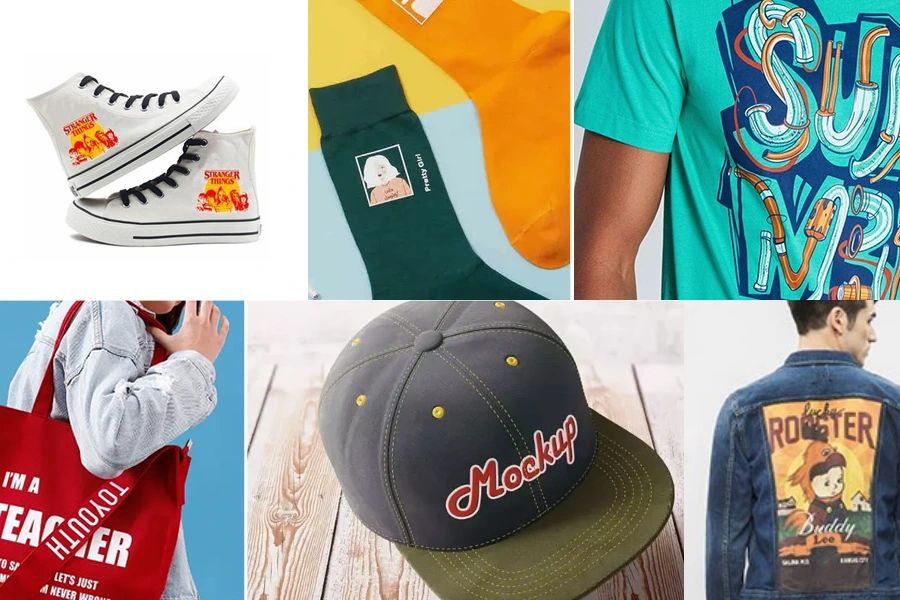
원단 종류
승화는 일반적으로 폴리에스테르 기반 직물에 사용됩니다., DTF는 더 넓은 범위의 직물에 사용될 수 있습니다., 면을 포함하여, 폴리에스테르, 그리고 블렌드. 주로 폴리에스터 직물을 사용하는 경우, 승화는 최선의 선택이 될 수 있습니다. 다양한 종류의 원단을 사용한다면, DTF는 더 많은 유연성을 제공할 수 있습니다..
색상의 선명도
승화 인쇄는 일반적으로 DTF 인쇄에 비해 더 생생하고 오래 지속되는 색상을 생성합니다.. 프로젝트에서 색상 품질이 최우선 사항인 경우, 승화는 더 나은 선택이 될 수 있습니다.- 세부 사항 및 해상도: DTF 인쇄는 승화 인쇄에 비해 더 세밀하고 해상도가 뛰어납니다.. 복잡한 디자인이나 패턴을 작업하는 경우, DTF는 더 나은 결과를 제공할 수 있습니다..
비용 및 장비
승화 인쇄에는 특수 승화 잉크가 필요합니다., 프린터, 그리고 전사지, DTF 인쇄 장비보다 비쌀 수 있습니다.. DTF 인쇄는 예산에 맞춰 인쇄 사업을 시작하려는 사람들에게 더 비용 효율적인 옵션일 수 있습니다..
사용 편의성
승화 인쇄에는 열 전달 과정이 포함됩니다., DTF 인쇄에는 핫멜트 파우더와 열 프레스를 사용해야 합니다.. 일부 사용자는 승화가 더 간단하고 사용자 친화적이라고 생각할 수 있습니다., 다른 사람들은 DTF 인쇄가 제공하는 더 강력한 제어 및 사용자 정의 옵션을 선호할 수도 있습니다..
환경 친화적인
승화 인쇄는 환경 친화적인 것으로 간주됩니다., 폐기물이 최소화되고 물이나 용매를 사용할 필요가 없기 때문입니다.. DTF 인쇄는 공정에 사용되는 전사 필름으로 인해 더 많은 폐기물이 발생할 수 있습니다..
승화 종이에 DTF 파우더를 사용할 수 있나요??
아니요, DTF 파우더는 승화지와 호환되지 않습니다.. DTF 파우더는 DTF 필름과 함께 사용하도록 설계되었습니다., 승화지는 다른 인쇄 공정을 위해 승화 잉크와 함께 사용됩니다.. 두 가지를 혼합하면 전사 품질이 저하되고 장비가 손상될 수 있습니다.. 각 프린팅 방법에 맞는 재료를 사용하는 것이 중요합니다.
DTF가 승화보다 나은가요??
DTF 사이의 선택 (직접 영화) 승화 인쇄는 귀하의 특정 요구와 선호도에 따라 다릅니다.. 두 가지 방법 모두 장점과 한계가 있습니다.:
DTF 인쇄
- 더 넓은 범위의 직물에 인쇄 가능, 면을 포함하여, 폴리에스테르, 그리고 블렌드.
- 복잡한 디자인을 위해 더 뛰어난 디테일과 해상도를 제공합니다..
- 승화에 비해 질감이 더 뛰어난 마무리를 얻을 수 있습니다..
- 어두운 직물에 흰색 잉크 인쇄 가능.
승화 인쇄
- 선명하고 오래 지속되는 컬러를 연출합니다., 특히 폴리에스테르 기반 직물의 경우.
- 환경 친화적, 폐기물이 최소화되고 물이나 용매가 필요하지 않기 때문입니다..
- 사용하기 쉽고 의류와 같은 품목에 인쇄하는 데 이상적입니다., 머그잔, 그리고 판촉물.
- 대량 생산 및 대량 맞춤화에 적합.
결론
본질적으로, 데코레이터와 제조업체는 DTF와 승화 인쇄 방법 중에서 선택할 때 특정 요구 사항을 신중하게 평가해야 합니다.. 결정은 애플리케이션 유연성과 같은 요소를 기반으로 이루어져야 합니다., 패브릭 호환성, 색상 옵션, 내구성 고려사항. 전반적인, 두 기술 모두 다양한 직물에 생생하고 내구성 있는 인쇄물을 만드는 데 유용한 솔루션을 제공합니다., 끊임없이 진화하는 직물 장식 분야에 기여.
